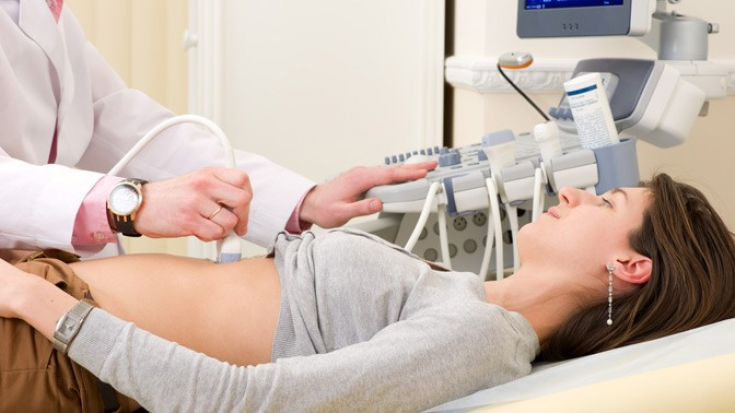Amniotic cord (amniotic fusion, amniotic constriction syndrome, Simonard's bands) is connective tissue fibrous filaments that originate from the amniotic membrane and are in a taut state between the walls of the uterus.
Amniotic bands are diagnosed after 12 weeks of pregnancy and in 80% of cases do not affect the development of the fetus and the process of gestation.
According to some reports, in 70% of cases, amniotic cords are not detected during repeated studies, as they can be compressed or torn.
In some cases, amniotic bands cause amniotic constrictions and can cause fetal developmental disorders.
Read on estet-portal.com causes, main symptoms and methods of diagnosing amniotic bands.
- Probable Causes of Amniotic Bands
- Possible complications of the presence of amniotic bands
- Diagnostic tactics for suspected amniotic cordsand
Probable Causes of Amniotic Bands
The exact causes of amniotic band formation have not yet been established.
There are 3 theories of their development:
1. Proponents of the first theory claim that vascular disorders.
are the cause of amniotic bands.2. The second theory states that amniotic cords are formed in the process of microdamage of the amnion at a period of 4 to 18 weeks of gestation.
Filaments of connective tissue that have detached from the amniotic sac float freely in the amniotic fluid and may envelop parts of the fetus.
When the size of the fetus increases, its parts are squeezed, which leads to developmental disorders and defects.
3. Proponents of the third theory associate amniotic band syndrome with intrauterine infections.
predisposing factors for the formation of amniotic bands include:
- isthmic-cervical insufficiency;
- endometritis;
- oligohydramnios;
- invasive research in pregnancy;
- malformations of the genital organs of the mother;
- teratogenic effect of drugs.
Most modern experts point to the absence of evidence of inheritance of amniotic cords.
The likelihood of their development does not correlate in any way with the age of the pregnant woman, the presence of amniotic cords during previous pregnancies, the number of previous births, and also with the existence of amniotic cordsth in blood relatives.
Dangerous conditions: dropsy of pregnancy
Possible complications of the presence of amniotic bands
The most common consequences of amniotic bands are limb crushing.
More often the distal sections are compressed, namely 2-4 fingers. Multiple constrictions of one limb at several levels are possible.
Amniotic bands form deep grooves on the limbs, which contribute to the development of trophic ulcers and elephantiasis against the background of impaired lymph and blood flow.
Compression of peripheral nerves results in development of paresis and paralysis accompanied by muscular atrophy.
In extremely severe cases, parts of limbs may become necrotic and slough off in utero.
In addition to the above, amniotic bands can cause the following pathologies:
- false joint;
- syndactyly;
- club hand;
- joint contracture;
- violation of the shape and size of the limb;
- nail deformity;
- deformities of the face and skull (non-closure of the palate and lips, omission of the eyelid, strabismus, corneal metaplasia, impaired development of the eyeball, obstruction of the lacrimal glands);
- defects in the torso area.
There is also an association between amniotic bands and congenital clubfoot.
Amniotic constriction syndrome is found in every third child with clubfoot.
In this case, clubfoot develops against the background of fixation of the leg with a band on one side and compression by the wall of the uterusand on the other hand, which significantly limits the mobility of the limb.
Read more of our articles on Facebook!
Diagnostic tactics for suspected amniotic bands
Amniotic bands can only be diagnosed after 12 weeks of gestation by ultrasound.

In some cases, the diagnosis is established by indirect signs, such as an increase in the distal limb, or its deformity. In such cases, overdiagnosis.
If amniotic bands are suspected:
- fetal echocardiography;
- 3D ultrasound;
- MRI.
In most cases, amniotic constrictions rupture on their own and do not contribute to pregnancy disorders, and are also often not detected during repeated ultrasound.
Amniotic bands do not require treatment. A pregnant woman is being monitored by specialists.
In the event of a threat to the life of the child, such as squeezing vital organs or the umbilical cord, surgical intervention is performed - dissection of the amniotic cords.
This type of operation has only recently begun and is still experimental in nature.
The tactics of rehabilitation of a child in case of congenital anomalies due to amniotic constrictions is selected individually.
The thread broke: the causes of recurrent miscarriage







Add a comment